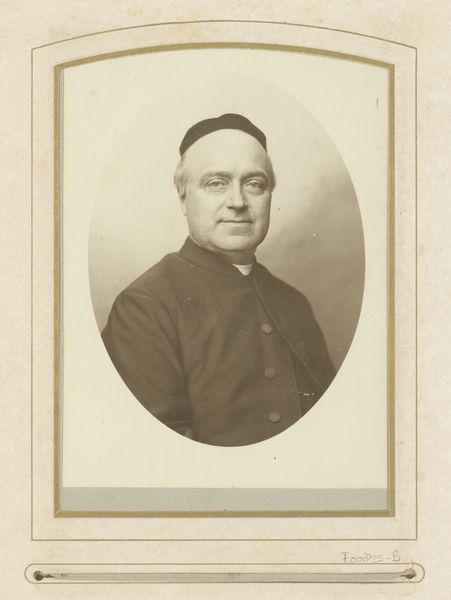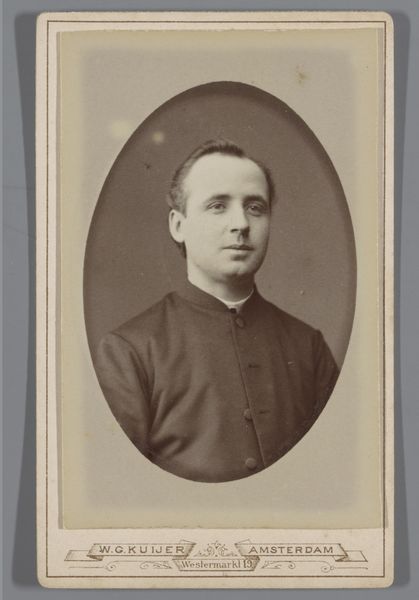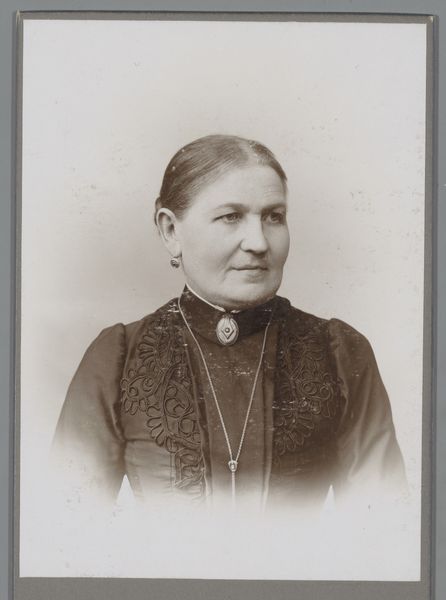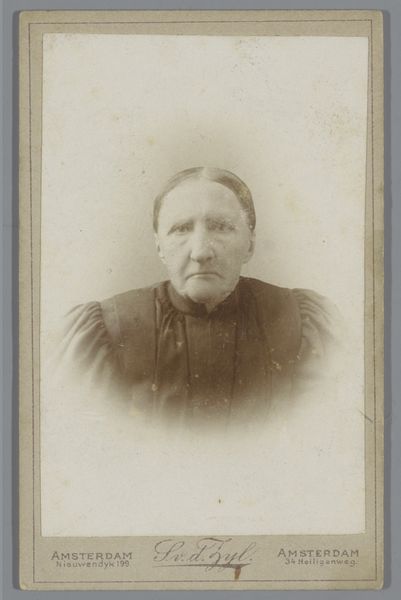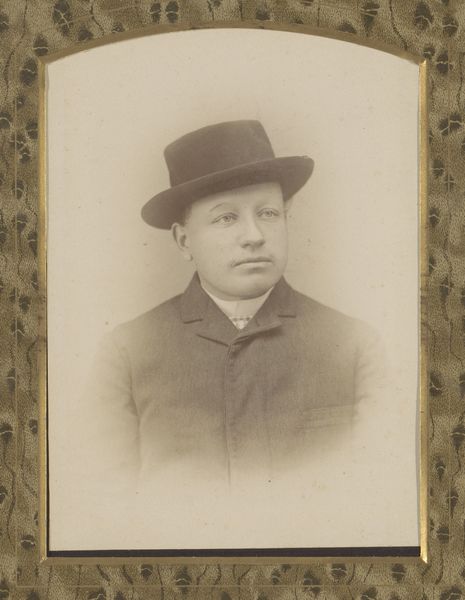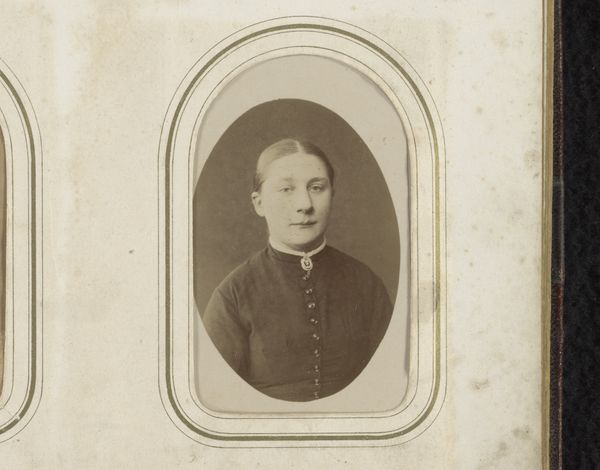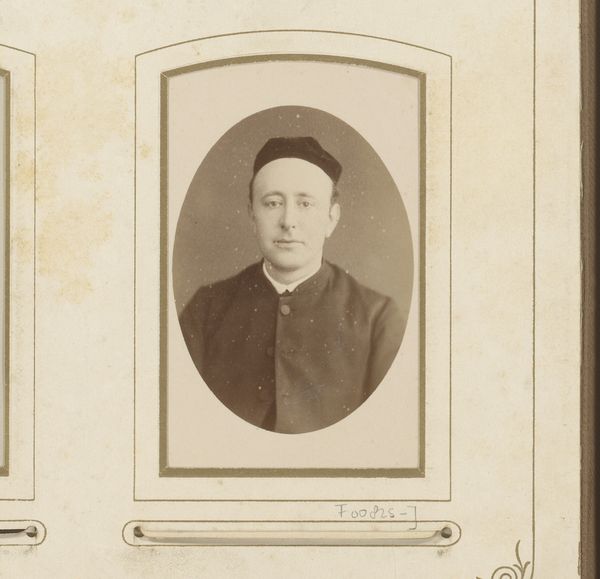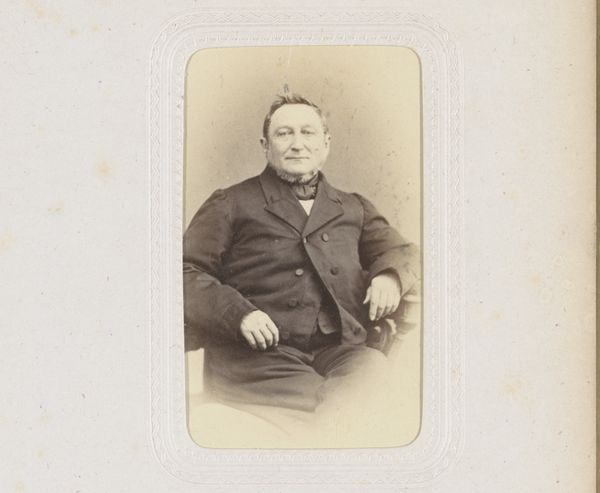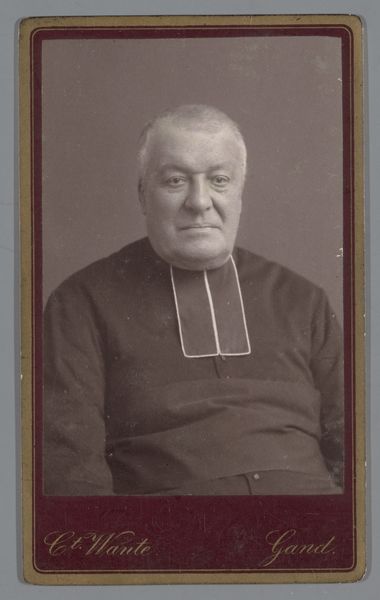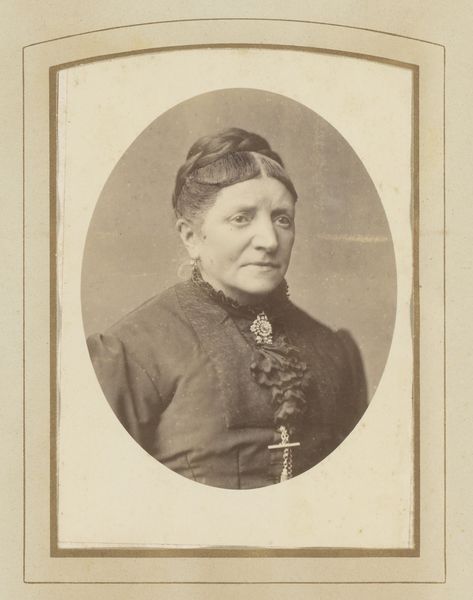
photography
#
portrait
#
photography
#
realism
Dimensions: height 103 mm, width 62 mm
Copyright: Rijks Museum: Open Domain
Curator: Looking at this photograph, an immediate stillness and weight fills the room. It's an oddly comforting portrait of what appears to be a religious figure. Editor: This photograph, entitled "Portret van pastoor Ten Hagen", which translates to Portrait of Pastor Ten Hagen, was captured in 1886 by Johannes Hendrikus Kramer. A very telling capture, if I do say so myself. Curator: You're right, it is telling, particularly when you consider the social function of photography at that time. To present, preserve, but also construct the identity of the sitter. He's framed almost symmetrically; his gaze holds authority, but there is a quietude too. Do you think the tone influences this feeling? Editor: Undoubtedly! It gives the subject a solemn look, perhaps a representation of what others think of pastors and reverends: serious. I see the use of sepia tone, alongside the clothing choice, a simple black suit with a white collar, gives off a more 'realistic' representation of his post. But notice the paper, Curator! Heavily treated with chemical compounds and toners to hold the silver particles. Look at how the aging paper bears the burden of preservation. Curator: True, true! It's easy to forget how constructed and mediated these "realistic" images are, and what an enormous investment of labor, time and expense it would take to make these photographs. This would probably have been someone's prized possession. It’s more than an aesthetic choice—it's a testament to the materials at hand and their deliberate selection. A good comparison could be drawn to present day Instagram filters that similarly shift images through tone to provoke a response. Editor: Exactly! While we engage with the man in the photograph, it also forces us to consider how that photographic technology creates a representation of power, in his expression but also in its crafting of a man for history. So while photography promised truth, it often curated a fiction of control. All elements considered, Pastor Ten Hagen’s look here embodies solemn leadership and authority—exactly as you implied earlier! The weight of holding his religious seat and everything he represents bears down on him. Curator: Indeed, it feels important to consider both the social weight, and the literal weight of this material object, in understanding its emotional impact on the viewer today.
Comments
No comments
Be the first to comment and join the conversation on the ultimate creative platform.


